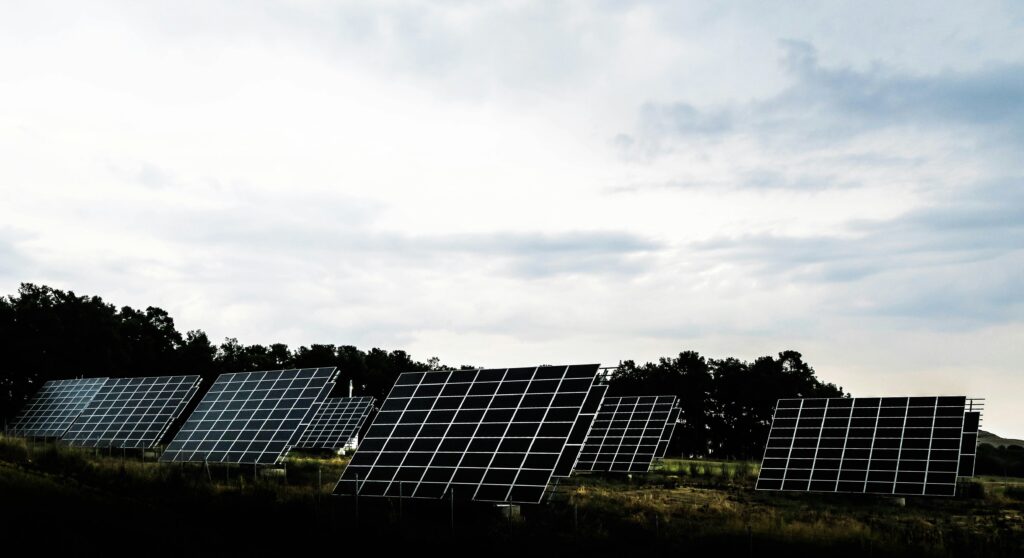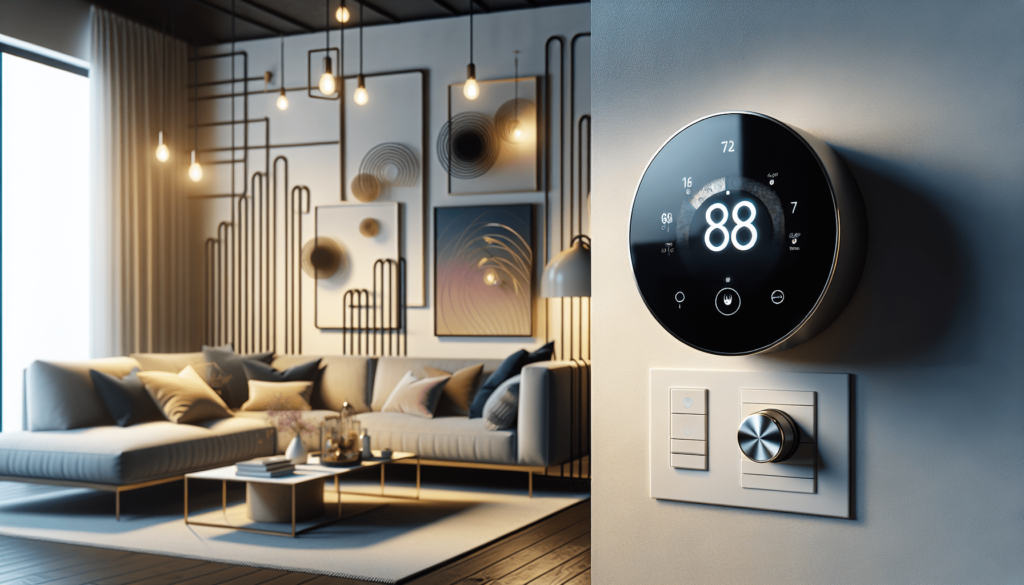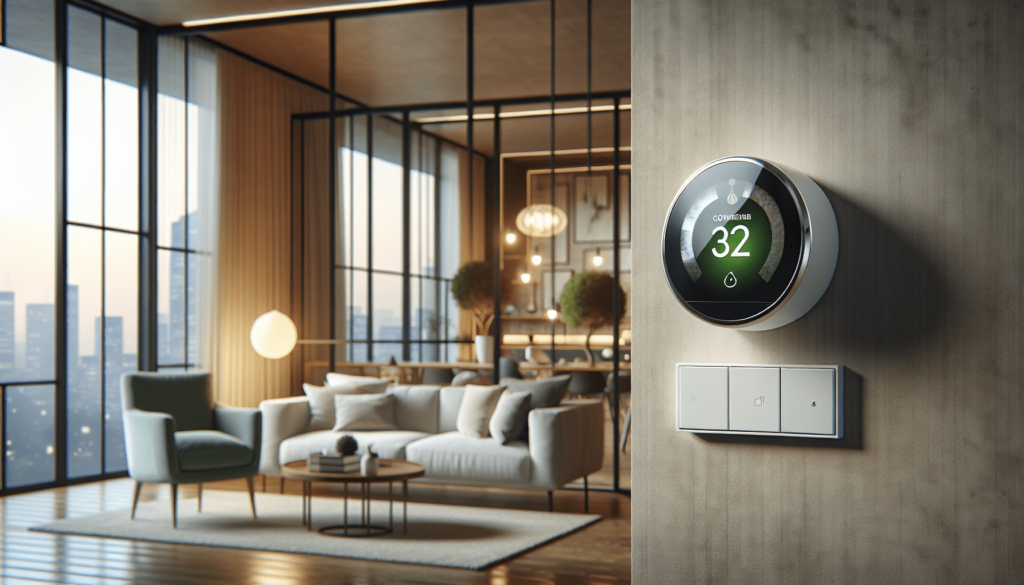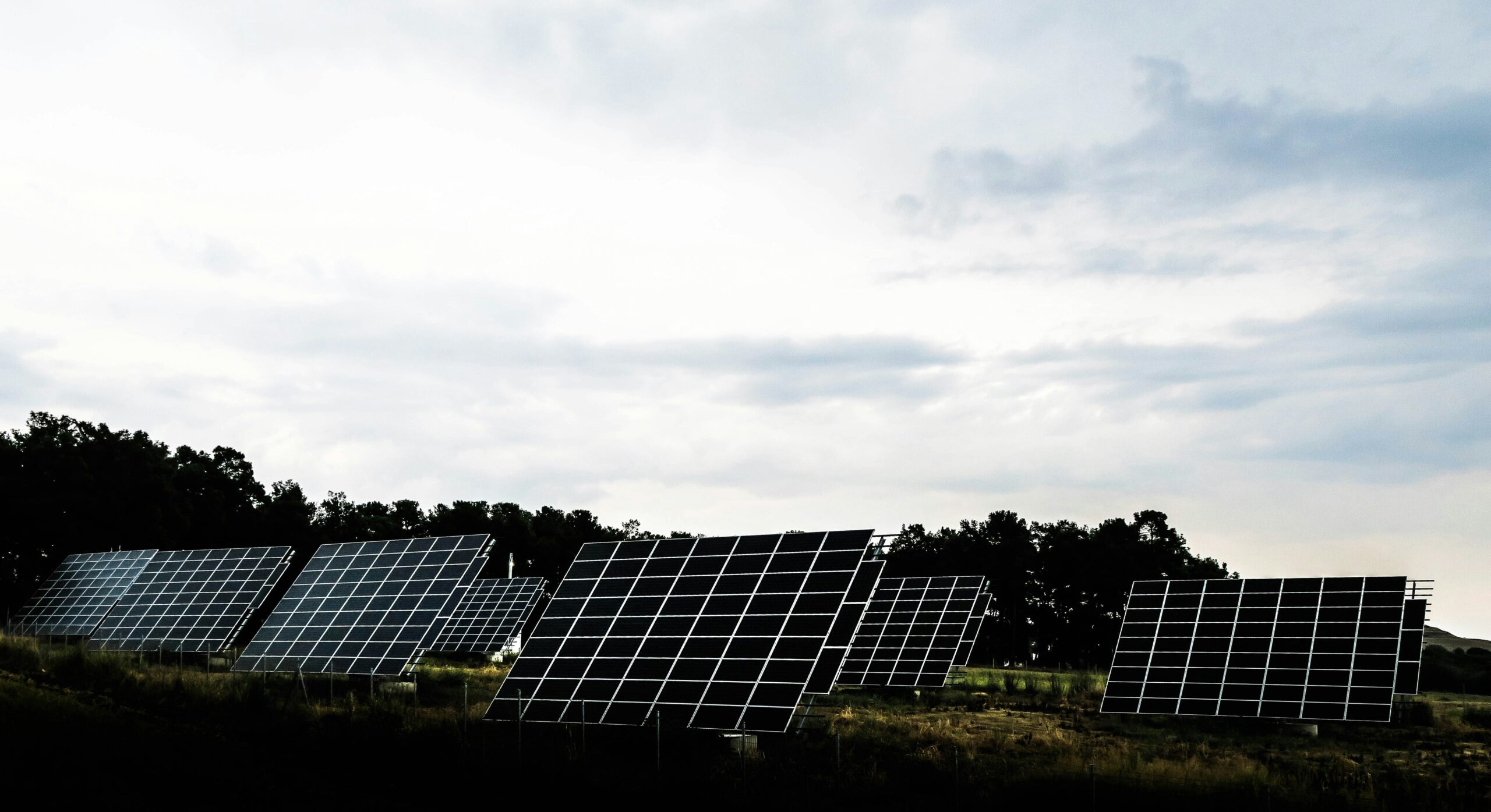Imagine being able to have complete control over your home’s temperature, even when you’re not there. A smart thermostat can do just that and so much more. With its advanced technology and intuitive features, a smart thermostat can help you save on both heating and cooling costs. By learning your preferences and daily routines, it adjusts the temperature accordingly, ensuring that you’re always comfortable while also minimizing energy consumption. Say goodbye to wasting valuable resources and hello to a more efficient and cost-effective way of regulating your home’s climate.

Energy Efficiency
Scheduling and Automation
A smart thermostat provides energy efficiency by allowing you to schedule and automate your heating and cooling settings. With a traditional thermostat, you would manually adjust the temperature throughout the day depending on your needs. However, with a smart thermostat, you can create a schedule based on your routine. For example, you can set the temperature to be higher during the day when you are not at home and lower during the night when you are asleep. This scheduling feature ensures that you are not wasting energy by heating or cooling an empty house. By automating your HVAC system, you can enjoy a comfortable indoor environment while reducing your energy consumption.
Learning Algorithms
Smart thermostats utilize learning algorithms to understand your heating and cooling preferences over time. These algorithms can analyze your usage patterns and adjust the temperature settings accordingly. For example, if you consistently lower the temperature in the evening, the smart thermostat will learn this pattern and proactively adjust the temperature in anticipation of your preferences. This not only saves you the effort of constantly adjusting the thermostat but also ensures optimal comfort while minimizing energy waste. The more the smart thermostat learns about your habits, the better it becomes at optimizing your energy usage and maximizing your savings.
Geofencing
Geofencing is a feature that uses your smartphone’s GPS to determine your location. With a smart thermostat, you can set up a geofence around your home, and when you leave the defined area, the thermostat can automatically adjust the temperature to save energy. For example, if you leave for work in the morning, the smart thermostat can detect your absence and switch to an energy-saving mode to reduce unnecessary heating or cooling. When you are approaching home, the geofencing feature can ensure that the house is at a comfortable temperature by the time you arrive. Geofencing helps to save energy by minimizing the HVAC usage when no one is at home and maximizing comfort when you are present.
Usage Tracking
Smart thermostats provide usage tracking features that allow you to monitor and analyze your energy consumption. Through the accompanying mobile app or online portal, you can view detailed reports and charts showing how much energy you have used over time. This information is valuable in understanding your energy usage patterns and identifying opportunities for savings. By having a clear visual representation of your energy consumption, you become more aware of how your choices impact your utility bills. Usage tracking empowers you to make informed decisions about your energy usage and adjust your habits to save both energy and money.
Optimized Heating and Cooling
Remote Access and Control
Smart thermostats offer remote access and control, allowing you to manage your HVAC system from anywhere with an internet connection. Through the mobile app or web portal, you can adjust the temperature, change the settings, or even turn off your heating or cooling system while you are away from home. This feature is especially useful if you forget to adjust the thermostat before leaving or if your plans change unexpectedly. With remote access, you have the flexibility to optimize your heating and cooling settings based on your current situation, ensuring energy efficiency even when you are not physically present.
Adjustment Features
Smart thermostats provide various adjustment features to help optimize your heating and cooling. These features include setting a precise temperature, adjusting the fan speed, or using eco-friendly modes. With the ability to set your desired temperature to a specific degree, you can avoid overcooling or overheating your space. Adjusting the fan speed allows you to control the airflow and optimize comfort without extra energy consumption. The eco-friendly modes prioritize energy savings by implementing pre-set temperature ranges for efficient heating and cooling. These adjustment features empower you to customize your indoor climate and achieve optimal comfort while minimizing energy waste.
Room-Specific Temperature Control
One of the significant advantages of smart thermostats is the ability to control the temperature in individual rooms or zones. Traditional thermostats typically measure the temperature in a central location, which may not accurately represent the comfort level throughout the entire house. With a smart thermostat and compatible sensors, you can set different temperature settings for each room or zone, ensuring that each area is heated or cooled according to its unique needs. This room-specific temperature control helps eliminate hot or cold spots, providing consistent comfort throughout your home. By tailoring the heating and cooling to specific areas, you can avoid overusing energy and reduce overall energy consumption.

Cost Monitoring and Reporting
Real-Time Energy Usage Data
Smart thermostats provide real-time energy usage data, displaying how much energy your HVAC system is consuming at any given moment. This real-time monitoring allows you to keep track of your energy usage and adjust your habits accordingly. By visualizing the immediate impact of temperature adjustments or equipment usage, you can make informed decisions to optimize your energy consumption. Whether you want to see the impact of turning on the air conditioning or reducing the heating temperature, the real-time energy usage data empowers you to take control of your energy usage and identify potential areas for improvement.
Monthly Cost Breakdowns
In addition to real-time energy usage data, smart thermostats can provide monthly cost breakdowns. These breakdowns show you the exact amount of money you are spending on heating and cooling each month. By knowing the cost associated with your energy usage, you can better manage your budget and make conscious decisions to reduce your heating and cooling expenses. The monthly cost breakdowns provide valuable insights into how much you are spending on energy, allowing you to identify trends and take action to save on your utility bills.
Comparison with Previous Bills
Smart thermostats often offer the ability to compare your current energy usage and costs with previous bills. This comparison feature helps you track your progress in energy savings over time. By visualizing the changes in your energy consumption from month to month or year to year, you can see the impact of your efforts to reduce energy waste. Whether you implement new habits or adjust your temperature settings, the ability to compare with previous bills provides motivation and encouragement in your energy-saving journey. Smart thermostats make it easy to monitor and analyze your progress, helping you stay on track towards greater energy efficiency.
Weather Integration
Weather Forecast Synchronization
Smart thermostats can sync with weather forecasts to adjust your temperature settings based on upcoming weather conditions. By accessing accurate weather data, the thermostat can proactively make changes to ensure optimal comfort while maximizing energy savings. For example, if it is going to be a particularly hot day, the thermostat can preemptively adjust the temperature to cool your home before the heat arrives. Similarly, if the forecast predicts a chilly night, the thermostat can adjust the heating settings to ensure a cozy environment without wasting energy. Weather integration allows your smart thermostat to adapt to external conditions, resulting in energy-efficient heating and cooling.
Adaptive Temperature Settings
In addition to weather forecast synchronization, smart thermostats can utilize adaptive temperature settings based on current weather conditions. By analyzing the outdoor temperature and humidity levels, the thermostat can adjust your indoor climate to maintain comfort while minimizing energy usage. For example, on milder days, the thermostat may decide to rely more on natural ventilation instead of mechanical cooling, thus saving energy. By continuously monitoring the weather and adapting the temperature settings accordingly, your smart thermostat ensures that your heating and cooling are optimized for energy efficiency and personalized comfort.

Smart Home Integration
Integration with Other Smart Devices
Smart thermostats can integrate with other smart devices within your home, creating a seamless and interconnected smart home ecosystem. By connecting to devices such as smart lighting or motion sensors, the thermostat can coordinate with these devices to enhance energy efficiency and convenience. For example, if the motion sensors detect that nobody is in a particular room, the smart thermostat can adjust the temperature accordingly to save energy. Integration with smart lighting allows the thermostat to take into account natural light sources and adjust the heating or cooling based on the room’s brightness, reducing unnecessary energy consumption. Smart home integration allows your thermostat to work synergistically with other devices, optimizing energy usage and improving your overall smart home experience.
Voice Control and Automation
With smart home integration, smart thermostats also offer voice control and automation features. By connecting your smart thermostat with virtual assistants such as Amazon Alexa or Google Assistant, you can control the temperature settings using voice commands. This hands-free control eliminates the need to physically interact with the thermostat, providing convenience and accessibility. In addition to voice control, automation capabilities allow your smart thermostat to work in tandem with other smart devices. For example, you can create routines that automatically adjust the temperature when you say, “Goodnight” or turn off the lights when you leave the house. Voice control and automation simplify your interaction with your smart thermostat and make energy efficiency effortless.
Optimal Comfort Settings
Efficient Temperature Settings
Smart thermostats offer efficient temperature settings that prioritize both comfort and energy savings. These settings include eco-mode, which maintains a temperature range optimized for energy efficiency, and smart recovery, which ensures your desired temperature is reached at the scheduled time. By utilizing these efficient temperature settings, you can enjoy comfort without wasting energy. Additionally, smart thermostats often provide personalized temperature recommendations based on factors such as outdoor weather, humidity levels, and time of day. These recommendations help you find the optimal temperature settings based on your preferences, creating a comfortable environment while minimizing energy consumption.
Humidity Control
Another aspect of optimal comfort settings is humidity control. Smart thermostats equipped with humidity sensors can detect and adjust the humidity levels in your home. By managing the humidity, you can improve indoor air quality, reduce the potential for mold growth, and enhance overall comfort. Smart thermostats may offer features such as dehumidification or humidification to maintain an optimal humidity range. When the humidity levels are too high, the thermostat can activate the dehumidification feature, while low humidity levels can trigger the humidification feature. By managing the humidity in your home, smart thermostats contribute to a healthier and more comfortable living environment.

Maintenance and Alert Features
Air Filter Replacement Reminders
Smart thermostats can provide reminders for air filter replacement, an essential maintenance task for optimal HVAC performance. By consistently reminding you to change the air filters, smart thermostats help ensure that your system operates efficiently and effectively. Clogged or dirty air filters can restrict airflow, strain the HVAC system, and reduce its lifespan. By receiving timely reminders, you can promptly replace the air filters and prevent potential problems. Regular air filter replacements also contribute to better indoor air quality by capturing dust, pollen, and other airborne particles. Smart thermostats take the guesswork out of filter replacement, helping you maintain a healthy and well-functioning HVAC system.
Troubleshooting Alerts
Smart thermostats can also alert you to potential issues or malfunctions with your HVAC system. When the thermostat detects any abnormal behavior or problems, it can notify you through the mobile app or email. These troubleshooting alerts enable you to address the issues promptly, preventing further damage or energy waste. By being proactive in detecting problems, you can avoid costly repairs or system failures. Smart thermostats act as a first line of defense by monitoring the performance of your HVAC system and alerting you to any abnormalities, ensuring that your heating and cooling run smoothly and efficiently.
Smart Away and Vacation Mode
Automated Energy-Saving Settings
The smart away and vacation mode feature of smart thermostats allows for automated energy-saving settings when you are not at home or on an extended vacation. When enabled, the thermostat detects your absence based on your phone’s geolocation or preset schedule. It then adjusts the temperature to a desired setback level, conserving energy while keeping your home at an appropriate temperature to prevent freezing pipes or excessive heat buildup. This automated energy-saving setting ensures that you are not wasting energy to heat or cool an empty home, resulting in significant energy savings over time.
Home Security Integration
Smart thermostats can integrate with home security systems to enhance both energy efficiency and security. By syncing with your security system, the thermostat can adjust the temperature based on the security status. For example, when you arm the security system in “Away” mode, the thermostat can activate the energy-saving settings of the smart away mode. If a security breach is detected while you are away, the thermostat can override the energy-saving settings and activate the heating or cooling to ensure the safety and comfort of your home. By combining energy efficiency with home security, smart thermostats provide a comprehensive solution for both comfort and peace of mind.

Energy Saving Tips
Customized Energy-Saving Recommendations
Smart thermostats can provide customized energy-saving recommendations based on your usage patterns and environmental conditions. By analyzing factors such as the weather, occupancy patterns, and energy usage history, the thermostat can suggest specific actions to reduce energy consumption. These recommendations may include adjusting temperature settings, changing fan speeds, or utilizing natural ventilation. By following these personalized suggestions, you can make small changes that add up to significant energy savings over time. The customized energy-saving tips empower you to make informed decisions and develop energy-conscious habits, leading to a more sustainable and cost-effective lifestyle.
Tips for Reducing Energy Consumption
In addition to customized energy-saving recommendations, smart thermostats can offer general tips for reducing energy consumption. These tips may include adjusting the temperature by a few degrees, using ceiling fans, or properly maintaining your HVAC system. By following these energy-saving tips, you can further maximize your efficiency and savings. The smart thermostat serves as a guide, providing valuable information and suggestions for optimizing your energy consumption. With the combination of customized recommendations and general tips, you have the knowledge and tools to create a more energy-efficient home.
Potential Energy Rebates
Eligibility for Energy Rebates
By installing and using a smart thermostat, you may be eligible for energy rebates offered by utility companies or government programs. These rebates incentivize individuals to adopt energy-efficient technologies and practices. The specific eligibility criteria and rebate amounts vary depending on your location and utility provider. However, by proactively researching and exploring these potential rebates, you can benefit from financial incentives while reducing your heating and cooling costs. Energy rebates serve as a reward for both your environmental consciousness and your commitment to energy efficiency.
Savings on Utility Bills
Ultimately, the primary motivation behind installing a smart thermostat is to save on heating and cooling costs. By utilizing the various features and functionalities of a smart thermostat, you can significantly reduce your energy consumption and, consequently, your utility bills. The energy efficiency measures provided by smart thermostats, such as scheduling and automation, learning algorithms, room-specific temperature control, and weather integration, all contribute to substantial savings over time. By investing in a smart thermostat, you not only enjoy the convenience and comfort of a smart home but also reap the financial benefits of reduced energy expenses.










